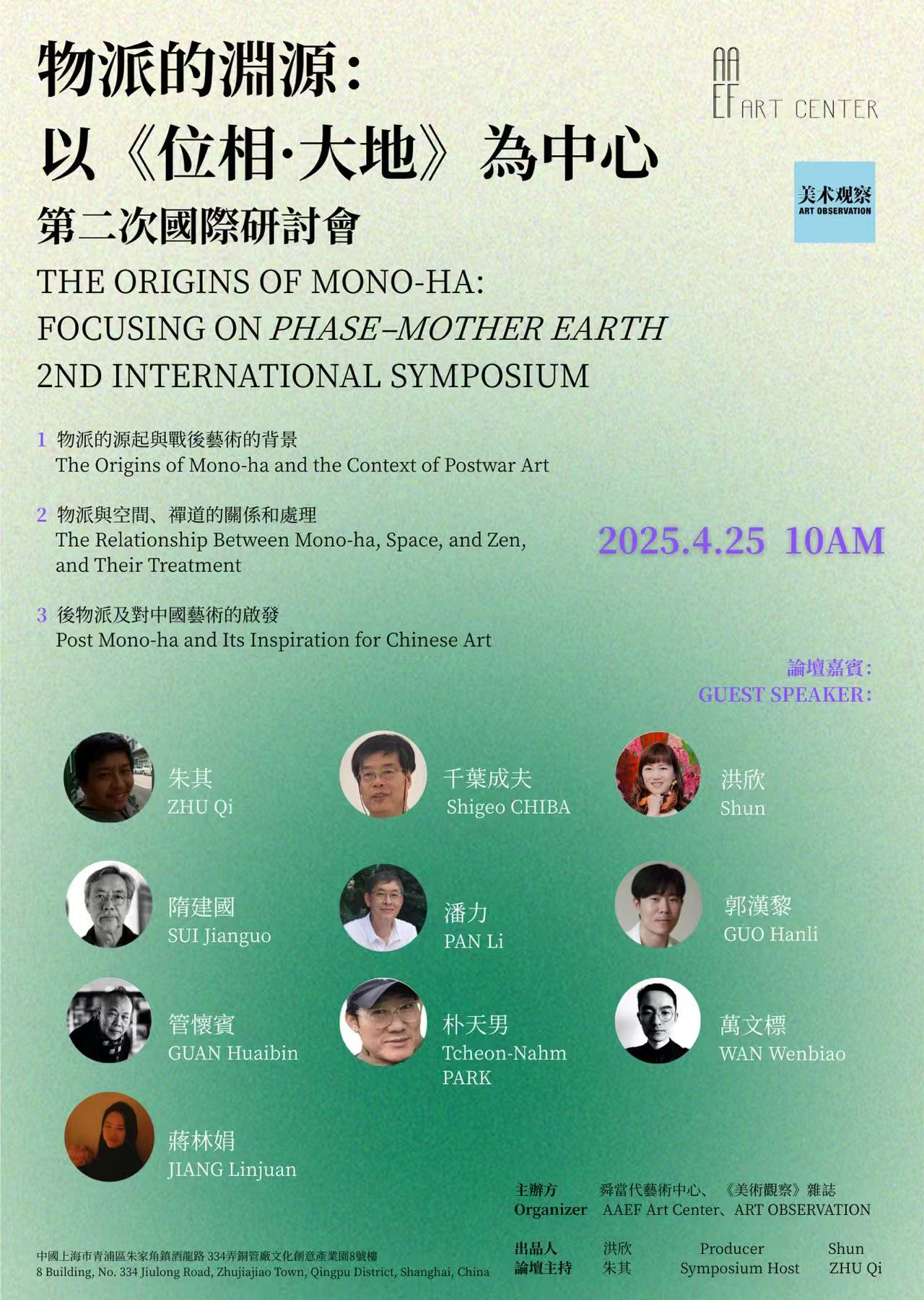
THEME:
《“The Origins of Mono-ha: Focusing on Phase–Mother Earth”2nd International Symposium》
Time:
April 25, 2025 10 am
Guest Speaker:
ZHU Qi;SUI Jianguo;GUAN Huaibin;JIANG Linjuan;Shigeo CHIBA;PAN Li;Tcheon-Nahm PARK;Shun;GUO Hanli;WAN Wenbiao
Producer: Shun
Symposium Host:ZHU Qi
Organizer:AAEF ART CENTER
The emergence of Mono-ha occurred during a pivotal moment in the transformation of postwar Western art in the 1960s and 1970s. This period, symbolized by Harald Szeemann’s landmark 1969 exhibition When Attitudes Become Form at the Kunsthalle Bern, witnessed the rise of movements such as Arte Povera in Italy, Fluxus in Germany, and Happenings in the United States—all of which sought to detach themselves from the twentieth-century avant-garde lineage that had developed from Dada to Conceptual Art. Against this backdrop, a new generation of Japanese artists, including Nobuo Sekine, Susumu Koshimizu, Katsuro Yoshida, and Lee Ufan, began seeking an independent path distinct from the Western modernist framework that had dominated Japanese art for nearly half a century.
Mono-ha is recognized as an artistic movement that developed contemporaneously with the western avant-garde transformations of the 1960s and 1970s after World War II. It shares fundamental methodologies with contemporaneous movements such as Arte Povera and Happenings, including minimal conceptual and aesthetic intervention, a Zen-influenced embrace of randomness, the rejection of inherited artistic conventions, and the incorporation of non-artistic concepts and materials. Yet, Mono-ha is distinguished by its creative rearticulation of East Asian philosophical and artistic traditions within a modern framework. It provided a new direction for East Asian art—particularly in China, Japan, and Korea—allowing it to break free from twentieth-century Western modernism and to establish a directional idea in the language method of physical works beyond the confines of calligraphy and ink painting.
Since the 1990s, interest in Mono-ha has steadily grown within China, largely due to its approach to modern naturalism: the use of natural materials with minimal subjective intervention, and its artistic idea resonating with the philosophical heritage of Zen Buddhism, Daoism, and broader Confucian-Buddhist-Daoist traditions. However, interpretations of Mono-ha within China have often been colored by a broad culturalist perspective, leading to certain persistent misconceptions regarding its relationship to Zen and Daoist thought. This symposium seeks to bring together leading scholars from China and abroad for a rigorous and nuanced examination of these issues.

